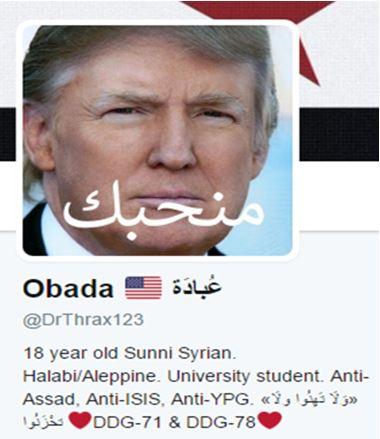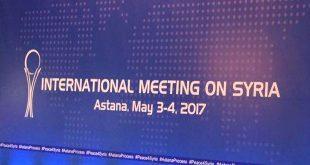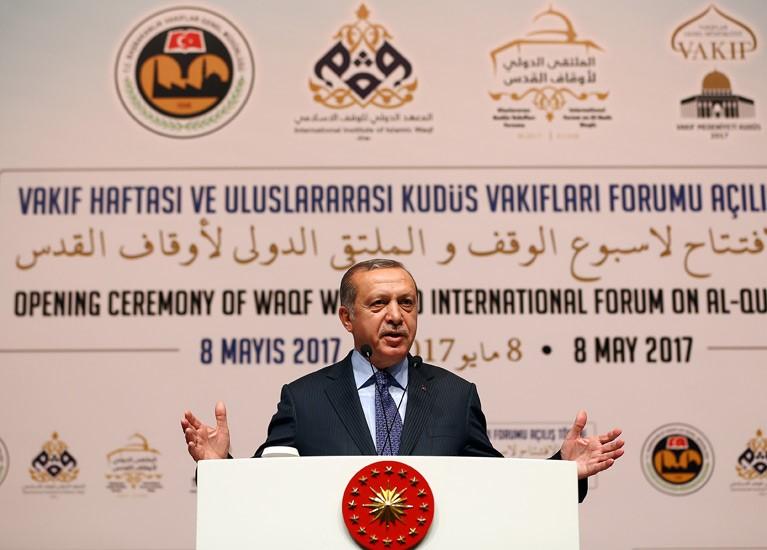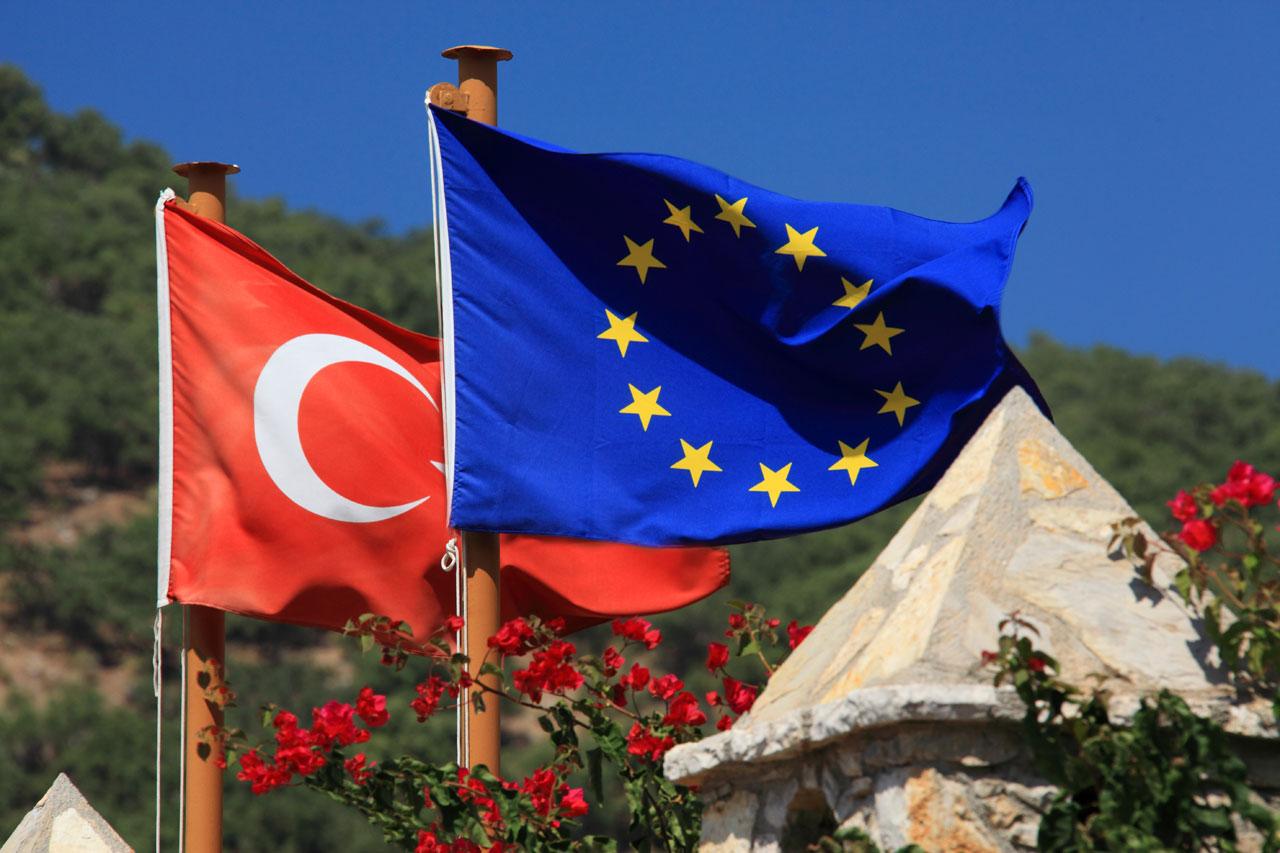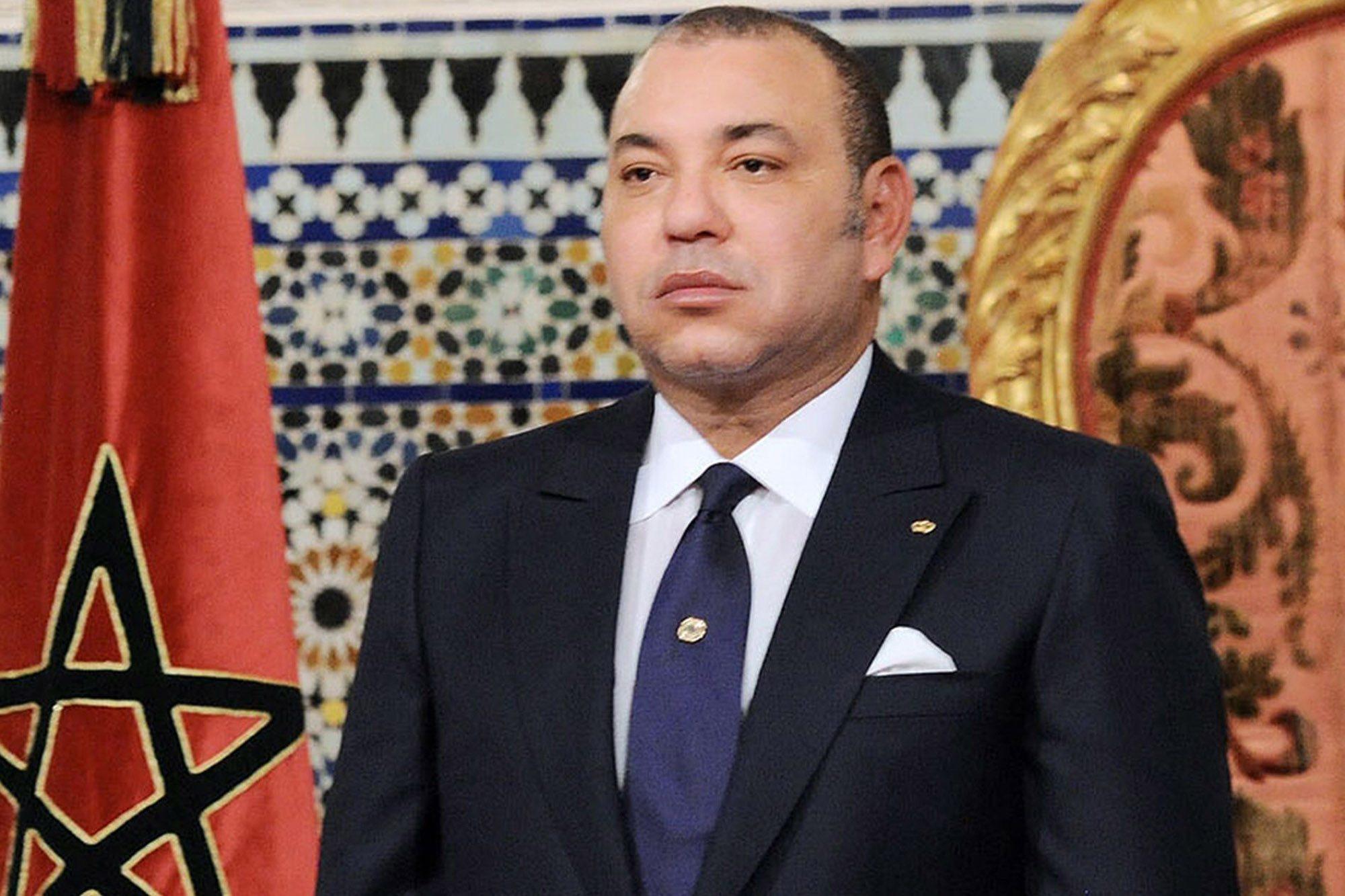
From Twitter: A poster condemning Assad, with the caption “Just wait, murderer: tomorrow you will pay the price.”
The horrific chemical attack against the village of Khan Sheikhun in Syria, resulting in many children's deaths, deepened the rift between the Palestinians and the Syrian regime, further deteriorating a relationship already decayed by six years of Syrian civil war.[1]Fatah and other organizations in the Gaza Strip, West Bank, and Palestinian diaspora condemned the attack and called for the perpetrators to be held accountable. While Fatah supporters in the West Bank attributed the attack to the Syrian regime and sought to distance themselves from its traditional support for the Palestinians, Hamas leadership refrained from direct accusation. Others rejected the accusations that the Syrian regime was involved in the attacks. These primarily Palestinian leftists, supported by the regime, instead proposed conspiracy theories about the involvement of Western countries, Israel, and several Arab states in the attack.
Many Palestinian users expressed deep shock at the chemical attack against the Syrian village and described those responsible for the operation as “terrorists.” For example, a user from Bethlehem wrote that the attack was “a disgrace to humanity's conscience. The blood of innocents was spilled. Tyranny must be ended and the criminals punished.” Other users criticized the lack of an international response, particularly from the Arab world, in the face of the atrocities. As one user from the West Bank wrote, “What if the nationality of these children was British? In that case, the world would wake up and not be passive. Even the leaders of the Arab countries would condemn and protest. But this child is an Arab child, and everything remains the same except the way [the children of Syria] die.” [2] Muhammad al-Sultan, head of the Student Council of the Islamic University in Gaza, also protested, “Women and the elderly face collective destruction because of international and Arab silence.”[3] Others were concerned that the attack would exacerbate the civil war.
Some prominent Palestinian users accused Assad’s regime of genocide. For example, Bilal Muhammad Abdel-Aal, a Gaza teen whose popular songs denounce Israel and praise lone Palestinian attackers, uploaded a Facebook video of acerbic verses condemning Assad. He called the Syrian president a “Zionist murderer,” stressing that shedding Muslim blood crossed a red line and that Assad would pay the consequences.[4] In Ramallah, activists rallied to condemn the Syrian attack, insistently rejecting Syrian aid to the Palestinian cause, claiming that the regime was carrying out genocide. The demonstrators waved signs reading, “Palestine renounces the crimes committed by the butcher of Damascus” and “We don’t want the keys to Jerusalem if they are immersed in the blood of children.” In addition, the demonstrators demanded the release of all Palestinian prisoners held in Syrian prisons and the lifting of the siege on the Palestinian Yarmouk refugee camp south of Damascus.[5] These demands were influenced by a broad internet campaign that Palestinian-Syrians began in January, demanding details about the fate of 12,000 Palestinian prisoners detained in Syria, under the hashtag, “Where are the detainees?” [6]
However, others chose to downplay the event. Notably, leaders of Hamas condemned the chemical attack, but refrained from directly accusing the Syrian regime – likely because of the traditionally complex relationship between Hamas and the Assad regime. On the eve of the civil war, Hamas was included in “the axis of resistance” (al-muqawama) to which Syria belonged. However, this positive relationship was disrupted by the civil war and the closure of Hamas offices in Damascus during the summer of 2012. Hamas' rivals, particularly Fatah, have attacked Hamas for its close relationship with the Syrian regime. Regardless, it appears that for now, the Hamas leadership prefers not to oppose the Syrian regime for its crimes against civilians, instead condemning only the attack itself. For example, senior Hamas figure Izzat al-Rasheq tweeted, “Hamas explicitly condemns the ugly massacre that took place today... and the use of chemical weapons against the residents."[7] However, Hamas supporters free of leadership considerations uploaded sharper condemnations inconsistent with the organization's policy. For example, at a protest organized by the Hamas-affiliated student group al-Qatla al-Islamiya in Gaza, the Syrian regime was called a “Criminal who is responsible for the massacre,” and placards read, “Khan Sheikhun is suffocating” and, “The children of Syria are dead.”[8]
In contrast, some left-wing Palestinian activists inside and outside Syria, such as members of the Popular Front for the Liberation of Palestine, which is supported by the Syrian regime, denied that the attack had occurred and cleared the Syrian regime of guilt. Taha al-Khatib, a Palestinian commentator who lives in Egypt, exemplifies this position. He claimed that the pictures of the children killed in Khan Sheikhun were forged and the reports of a chemical attack were false. Moreover, according to al-Khatib, the United States was unable to present a single picture proving that the wounded were in hospitals in Turkey. He further charged that Israel and Turkey had buried chemical charges in Khan Sheikhun intended to explode in the wake of a Syrian attack. This would allow for the accusation that the regime had perpetrated a massacre, generating international public support for a strike in Syria.[9] A left-wing Palestinian user from Syria wrote that just as the US had falsified data on the existence of chemical weapons in Iraq to justify its attack on Iraq, it was now falsifying data on Syria. Others sought to exploit the events in Syria to increase resistance against Israel. For example, Tamim al-Barghouti, a Palestinian poet in Egypt supportive of the Syrian regime, claimed that the “barbaric act” ensnares Syria in an ethnic war that deepens its rifts. According to al-Barghouti, the only extrication option is intensified resistance against Israel through concentration of forces in the south. [10]
On the other hand, Palestinian users in Syria and abroad heavily criticized supporters of the Syrian regime for expressing audacious solidarity with “the chief murderer Bashar al-Assad.” In Ramallah, demonstrators chanted, “No to the left if it stands beside Bashar.” [11] One user wondered how Palestinians could stand by Assad while Jews were expressing solidarity with the children of Khan Sheikhun.[12]
The reactions on social media to the Syrian regime and the massacre in Khan al-Sheikhun articulate fissures between significant segments of the Palestinian people. Geopolitical and internal political contexts influence attitudes towards an issue that is not directly related to the Palestinian cause. Hamas leadership's failure to explicitly blame the Syrian regime underscores a difficult dilemma. Hamas fears the erasure of any remnants of its positive relationship with Syria and, no less importantly, with Assad’s main ally, Iran. This stance, combined with West Bank Palestinian leadership's unwillingness to advance the problem of the Palestinian prisoners in Syria, is liable to drive a wedge between the Palestinian diaspora and Hamas and Fatah leadership. The discourse also displays the influence of Palestinian left-wing activists' strong pro-Syria stance, resulting in refusal to recognize the regime’s crimes – a refusal that many users find immoral.
[1] In June 2016, the Palestinian Center for Policy and Survey Research in Ramallah, headed by Dr. Khalil Shikaki, published results of a public opinion poll showing a decline in Palestinian’s support for the Syrian regime, because of the brutally oppressive tactics that the regime uses against the Sunni population of the country. The poll found that only 18% of Palestinians support the Syrian regime. For the complete survey in Arabic, see http://www.pcpsr.org/ar/node/659 ; in English, http://www.pcpsr.org/en/node/658.
[2] 4 April 2017: https://www.facebook.com/QudsN/videos/1495713600505536/
[3] 5 April 2017: https://www.youtube.com/watch?v=Z_11fhAdgnA
[4] 6 April 2017: https://www.facebook.com/1036742203042741/videos/1472675109449446/; Another video of a different teen was also shared on the Facebook page of Gazan Bilal Muhammad Abdel-Aal. It called for leaders of the Arab world to wake up and help Muslim, not only in Syria but also in Afghanistan, Palestine, and elsewhere.
[5] 4 April 2017: https://www.facebook.com/QudsN/videos/1495713600505536/
[6] # وين_المعتقلين;See also the website of the Documentation Center of Missing and Detained Palestinians in Syria http://mdpal.info
[8] 5 April 2017: # حلب_تحترق https://www.youtube.com/watch?v=Z_11fhAdgnA
[9] 8 April 2017: https://www.youtube.com/watch?v=urflXEr8gMk; https://www.facebook.com/taha.elkhatib.9/posts/1909678462608905
[12] 4 April 2017: https://www.facebook.com/QudsN/videos/1495713600505536/
